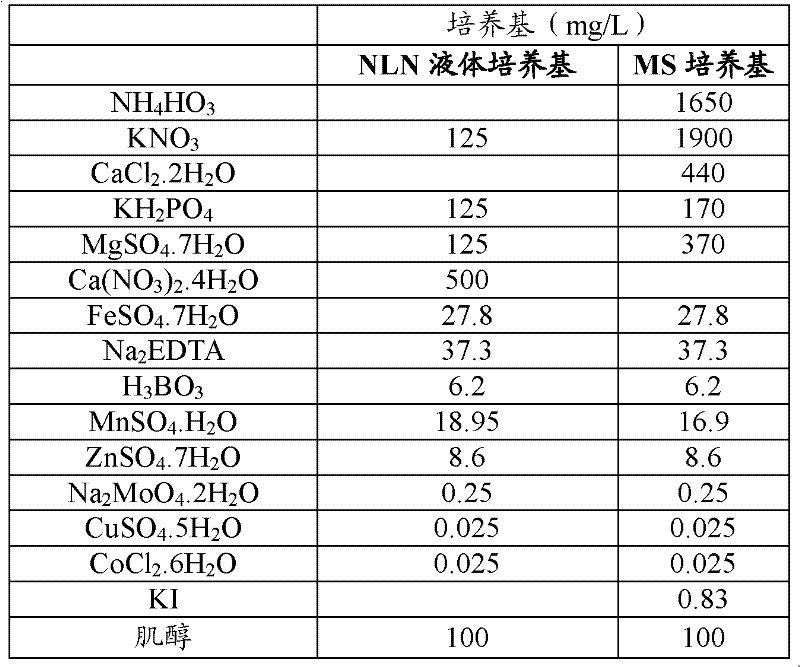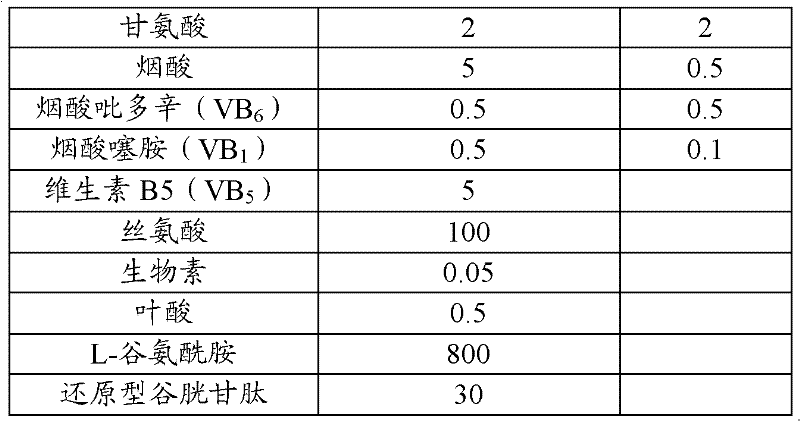Culture method for brassica oleracea L. var. acephala microspore regeneration plant
A microspore culture and kale technology, which is applied in the field of plant tissue culture, can solve the problems of affecting the embryo production rate, affecting the quality of the embryo, inhibiting the microspore cultivation and breeding technology, etc., and achieve the effect of increasing the embryo emergence rate and improving utilization efficiency
- Summary
- Abstract
- Description
- Claims
- Application Information
AI Technical Summary
Benefits of technology
Problems solved by technology
Method used
Image
Examples
Embodiment 1
[0037] The cultivation method is carried out as follows.
[0038] (1) Culture medium preparation: comprise the culture medium of microspore different culture stages, its component and the weight that each component contains in every liter of medium are:
[0039] Table 1 NLN and MS medium composition list
[0040]
[0041]
[0042] 1) NLN-13 induction medium: NLN liquid medium 1L + sucrose 130g / L, pH6.0, filter sterilized;
[0043] 2) Embryoid body differentiation medium: MS medium + sucrose 20g / L, agar 10g / L, pH 6.0, high temperature and high humidity sterilization;
[0044] 3) Rooting medium: MS medium + sucrose 30g / L, agar 6g / L, pH5.8, high temperature and high humidity sterilization;
[0045] (2) Cultivation of the regenerated plants of microspores of kale with high germination rate:
[0046] 1) Selection of flower buds of donor plants: take healthy and pest-free inflorescences of kale and rapeseed as donor plants for microspore culture; after induction at a low te...
Embodiment 2
[0056] In addition to step (1) in 1) NLN-13 induction medium: NLN-13 liquid medium 1L + sucrose 130g / L, pH6.1, filter sterilization; 2) embryoid differentiation medium: MS medium + sucrose 20g / L, agar 11g / L, pH6.1, high temperature and high humidity sterilization; 3) Rooting medium: MS medium + white sugar 20g / L, agar 7g / L, pH5.9, high temperature and high humidity sterilization;
[0057] (2) Cultivation of the regenerated plants of microspores of kale with high germination rate:
[0058] 1) Selection of flower buds of donor plants: take healthy and pest-free inflorescences of kale and rapeseed as donor plants for microspore culture; after induction for 48 hours at a low temperature of 3°C, the length of petals and anthers on the inflorescences are taken at a ratio of 1.1. Flower buds from late mononucleate to early binucleate;
[0059] 2) Sterilization of flower buds: use 5.6% (mass percentage concentration) sodium hypochlorite aqueous solution 56ml / L+ absolute ethanol 100m...
Embodiment 3
[0068] In addition to step (1) in 1) NLN-13 induction medium: NLN-13 liquid medium 1L + sucrose 130g / L, pH6.2, filter sterilization; 2) embryoid differentiation medium: MS medium + sucrose 20g / L, agar 12g / L, pH6.0, high temperature and high humidity sterilization; 3) rooting medium: MS medium + sucrose 25g / L, agar 6.5g / L, pH6.0, high temperature and high humidity sterilization;
[0069] (2) Cultivation of the regenerated plants of microspores of kale with high germination rate:
[0070] 1) Selection of flower buds of donor plants: take the inflorescences of kale and rapeseed that grow healthily and are free of diseases and insect pests as donor plants for microspore culture; take flower buds with a petal to anther length ratio of 0.8 on the inflorescence, late mononucleate to early binucleate;
[0071] 2) Sterilization of flower buds: use 5.6% (mass percentage concentration) sodium hypochlorite aqueous solution 56ml / L+dehydrated alcohol 100ml / L+clean liquid 9 drops+sterile wa...
PUM
 Login to View More
Login to View More Abstract
Description
Claims
Application Information
 Login to View More
Login to View More - R&D
- Intellectual Property
- Life Sciences
- Materials
- Tech Scout
- Unparalleled Data Quality
- Higher Quality Content
- 60% Fewer Hallucinations
Browse by: Latest US Patents, China's latest patents, Technical Efficacy Thesaurus, Application Domain, Technology Topic, Popular Technical Reports.
© 2025 PatSnap. All rights reserved.Legal|Privacy policy|Modern Slavery Act Transparency Statement|Sitemap|About US| Contact US: help@patsnap.com


